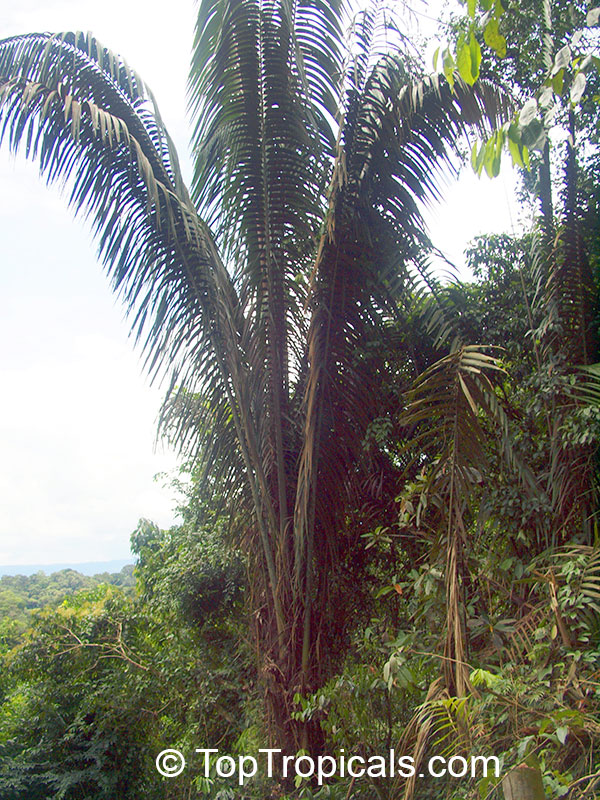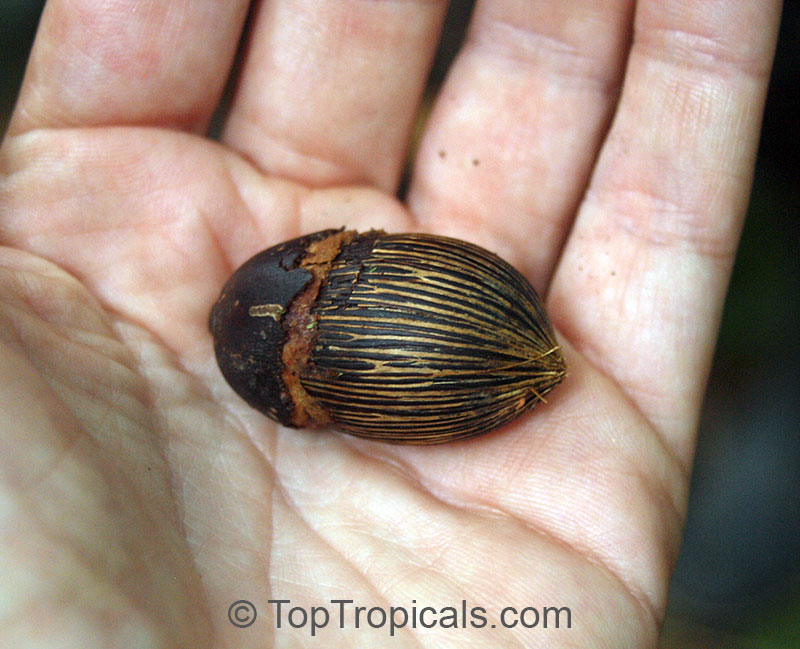Oenocarpus bataua (Patawa)
Top Tropicals Plant Encyclopedia
Botanical names: Oenocarpus bataua, Jessenia polycarpa
Common names: Patawa, Sehe, Hungurahua, Ungurahui
Family: Arecaceae / Palmae
Origin: Central America, South America







This palm can reach up to 20 ft in height in its natural environment, where it grows and flourishes under humid conditions and full sun, but also tolerates shade.
In cultivation, Oenocarpus bataua or Patawa, can be grown in USDA Zones 9-11 and requires plenty of warmth, water, and humidity to thrive. Its ideal growing conditions include regular watering and plenty of sunlight, as the plant prefers full sun or light shade and should not be exposed to temperatures lower than 40F. This palm is an ethnomedical plant, traditionally used by local tribes as an astringent, emollient, and diuretic.
The fruits of Oenocarpus bataua are edible and have an interesting flavor and texture. The fruits are rich in high quality oil, which is widely used in South America for cooking, and also thought to have a variety of therapeutic applications. Studies have demonstrated that the oil from Oenocarpus bataua has anti-inflammatory, antioxidant, and anti-microbial properties that could be beneficial for cardiovascular and metabolic health. The fruit can be eaten raw or processed into oils and jellies.
Caring for Oenocarpus bataua in pot is especially important in cold regions as the plant is not frost tolerant. In order to keep it safe from possible damages, it is best to place the pot in a sunny location and provide some shelter if temperatures drop significantly. The soil should be kept moist and well-drained and fertilized regularly to ensure optimal growth. Growing Oenocarpus bataua in a pot also allows the gardener to easily move the plant and monitor its health.

